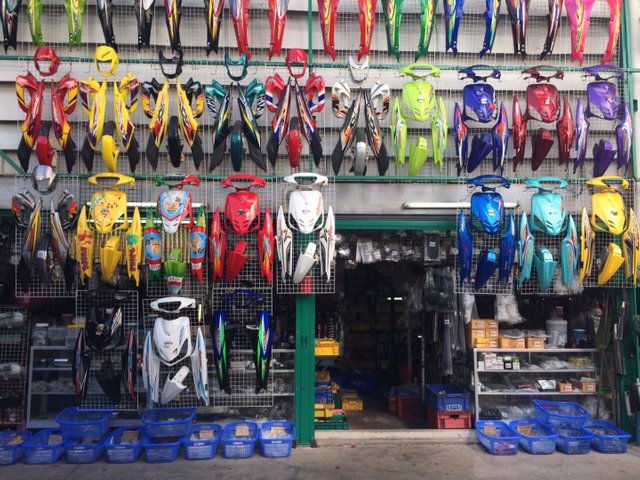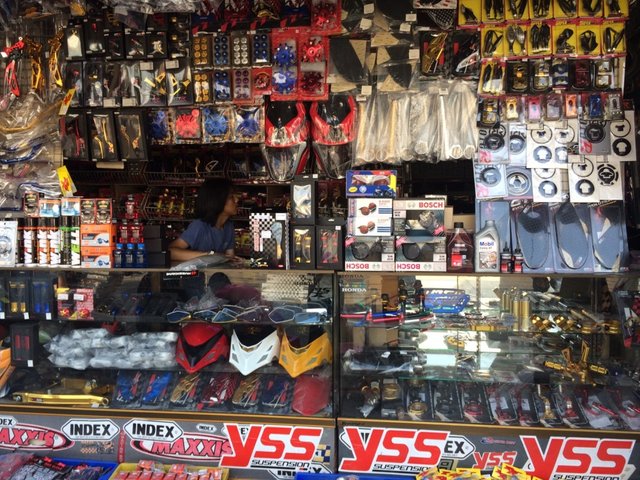Leading MX Gear NZ: Get Ready for Your Following Off-Road Journey
Leading MX Gear NZ: Get Ready for Your Following Off-Road Journey
Blog Article
Comprehending the Important Parts of a Motorbike: A Comprehensive Guide for Enthusiasts
For motorbike enthusiasts wanting to boost their riding experience and ensure their bikes run efficiently, comprehending the crucial parts of a motorbike is critical. Each component, from the engine's complex workings to the important duty of the stopping mechanisms, not just impacts performance but additionally safety and security and comfort. This overview will go through the basic components that every motorcyclist need to recognize with, enabling educated options in both upkeep and possible upgrades. As we begin this expedition, one must ask: exactly how does each part communicate to create the seamless ride every lover seeks?
Engine Components

The camshaft plays a critical role in regulating the timing of the engine's shutoffs, guaranteeing the exact opening and closing required for reliable gas and air intake, along with exhaust expulsion. This timing is essential to keeping ideal engine performance and performance. In addition, the carburetor or fuel injection system, depending on the bike model, is in charge of blending air with gas in the appropriate ratio for combustion.
The air conditioning system, either air or liquid-based, functions to maintain the engine's temperature level within functional limitations, preventing overheating and guaranteeing long life - motocross gear nz. Each part, carefully created and incorporated, adds to the smooth operation of the engine, defining the bike's power output and total performance
Transmission System
Integral to the bike's capability, the transmission system guarantees effective power transfer from the engine to the wheels. This system consists of a number of important components, including the clutch, transmission, and final drive, each playing a vital duty in equating the engine's power into movement. The clutch, generally operated by a hand bar, offers to involve and disengage the engine from the transmission, enabling for smooth gear adjustments and regulated velocity.
The gearbox, typically described as the transmission correct, contains a collection of equipments that cyclists can by hand move through to adjust the bike's speed and torque result. These equipments are prepared in a series that enables the bike to accelerate smoothly and maintain optimal engine efficiency throughout numerous speeds. Many motorcycles use a consecutive gearbox, calling for the cyclist to move gears in a predetermined order.
Braking Devices
While recognizing the transmission system is crucial to using a motorcycle's power, equally crucial is the ability to control and quit that power efficiently, which is where stopping devices enter play. Brakes are important for safety and security and performance, providing the motorcyclist with the needed control to browse various surfaces and problems. Generally, bikes feature two sorts of stopping systems: disc brakes and drum brakes.
Disc brakes are extra common in contemporary motorbikes due to their remarkable efficiency. They include a brake disc, caliper, and pads. When activated, the caliper squeezes the brake pads against the spinning disc, converting kinetic power right into warmth, thereby reducing the wheel. This system offers far better warmth dissipation, consistent performance, and boosted quiting power, particularly in damp problems.
Alternatively, drum brakes, though less common, are still found in some bikes. They function by pushing brake shoes against the inner surface area of a drum affixed to the wheel. While typically much less efficient read this post here in warmth dissipation and quiting power, drum brakes are simpler and a lot more cost-efficient.
Comprehending these braking systems' nuances enables bikers to keep their bikes appropriately and value the design that guarantees efficient and risk-free quiting.
Suspension and Steering
Suspension and guiding systems are vital parts that significantly influence a motorbike's handling and adventure convenience. The shock absorber, containing forks at the front and shock absorbers at the rear, absorbs roadway abnormalities, enhancing stability and control. Front forks, generally telescopic or inverted, compress and rebound to reduce influences, while back shock absorbers maintain tire contact with the roadway, important for grip and safety and security.
Steering, focused around the handlebars, attaches the biker to the motorbike's directional control. The guiding head bearings ensure smooth operation, permitting accurate maneuverability. Appropriate placement and upkeep of these bearings are critical for foreseeable steering response and lowering cyclist tiredness.
The suspension's adjustability is another critical element; preload, damping, and rebound settings permit personalization to suit various riding styles and conditions. This flexibility is necessary for optimizing performance, whether browsing city roads or dealing with sturdy trails. Advancements like digital suspension systems supply real-time adjustments, improving adventure quality throughout varied surfaces.

Electric Systems
After making sure a smooth and controlled trip with effective suspension and guiding systems, attention turns to the electrical systems, a critical element of contemporary bikes. These systems my site play a critical role not only in starting the engine but additionally in powering numerous components that boost the performance and safety and security of the bike.
At the heart of a bike's electrical system is the battery, which shops electrical energy required for starting the engine and powering complementary systems - motorcycle shop. The alternator or generator, coupled with the rectifier-regulator, guarantees the battery continues to be billed while the bike functions, transforming mechanical power into electric power and preserving voltage levels
The ignition system, another vital element, is in charge of stiring up the air-fuel mixture in the engine's cyndrical tubes. Modern motorcycles often make use of a digital ignition system, supplying better effectiveness and integrity contrasted to conventional systems.
Lights systems, consisting of fronts lights, tail lights, and indications, are likewise important, making certain visibility and safety for the rider. Added digital components such as sensing units, control systems, and displays contribute to advanced features like gas shot monitoring, anti-lock braking systems (ABDOMINAL MUSCLE), and electronic dashboards, even more boosting the riding experience.
Final Thought
An extensive comprehension of a motorbike's crucial parts, including the engine, transmission system, stopping devices, suspension, guiding, and electric systems, is vital for enthusiasts aiming to maximize convenience, efficiency, and safety. Mastery of these components allows for notified decisions relating to maintenance and upgrades, ultimately enhancing the riding experience. By integrating this understanding, bikers can guarantee their bikes run at peak performance and integrity, therefore maximizing both pleasure and long life of their cars.
For motorcycle lovers looking to raise their riding experience and ensure their bikes run smoothly, understanding the vital elements of a motorcycle is paramount.Integral to the bike's capability, the transmission system ensures reliable power transfer from the engine to the wheels.While comprehending the transmission system is key to utilizing a bike's power, similarly important is the ability to manage and stop that power successfully, which is where braking systems come right into play. Commonly, bikes include 2 kinds of stopping their explanation systems: disc brakes and drum brakes.
A thorough comprehension of a motorbike's necessary components, consisting of the engine, transmission system, stopping mechanisms, suspension, steering, and electric systems, is crucial for lovers intending to optimize safety and security, comfort, and performance.
Report this page